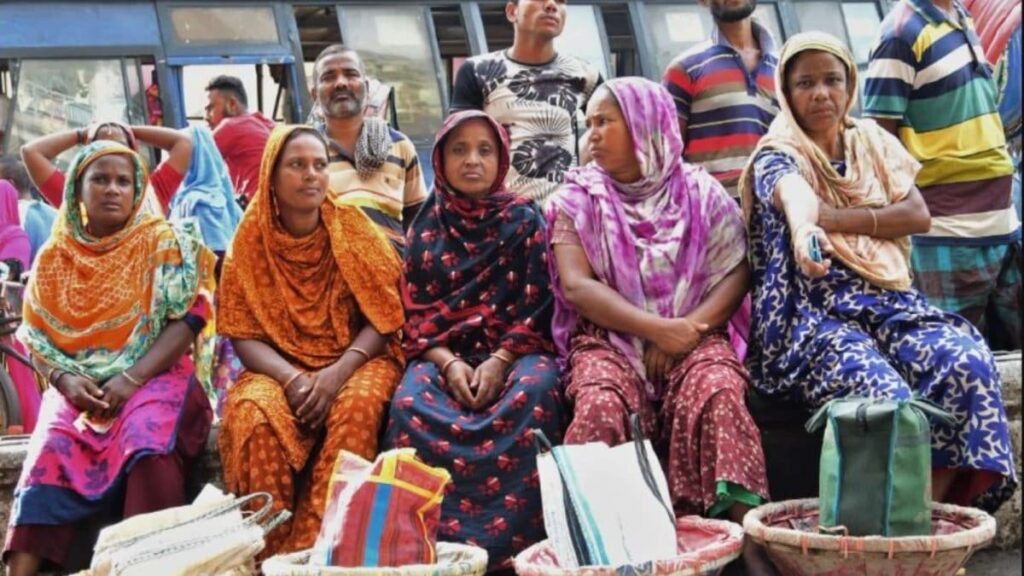The past few months were tumultuous for Bangladesh. Students’ protests and the ouster of ex-President Sheikh Hasina this year have pushed the country into an acute economic crisis and now Bangladesh is battling high inflation, rapidly drying foreign exchange reserves, soaring debt, high fuel prices and increasing unemployment which are mounting trouble on Muhammad Yunus-led interim government.
With its economy shrugging, Bangladesh may sooner or later turn towards its neighbour India for assistance, just like the Maldives did a few months back.
For Bangladesh, tough days started with nationwide student protests in July and August that heavily impacted the country’s economy. Days after Hasina fled Colombo on August 5, the interim government took charge to bring back normalcy, but incessant rains leading to massive floods, causing severe damage in 11 districts made the situation more challenging.
Bangladesh’s textile industry, which accounts for 80 per cent of its exports and 15 per cent of its GDP, is also crippling since the student protests began in July.
As of June 2024, Bangladesh’s external debt was $103.8 billion. The country’s debt-to-GDP ratio was 37.9 per cent.
Bangladesh’s bankruptcy could be a major threat not just for India but for the entire South Asia.
Worrying Bangladesh economy
The unstable political and economic conditions in Bangladesh have dampened investors’ sentiments and confidence in the country.
Also, the World Bank has forecast a deceleration of 4.0 per cent in Bangladesh in FY25, with sluggish investment and industrial activity.
With the situation turning deplorable and economic conditions becoming grim, Bangladesh is soon expected to reach out to nations that it feels may help prevent it from sinking. It may also approach India with which it shares friendly ties.
Let us look at how India will come to rescue Bangladesh and what more it can do to save the economy of its other neighbour after the Maldives.
Bangladesh relies heavily on India for electricity supplied through cross-border transmission lines but that’s not all. Dhaka is also engaged with New Delhi in several other economically important and capital-intensive projects that helped it see robust growth over the past decade.
According to the Ministry of External Affairs (MEA), Bangladesh currently is importing 1,160 MW of power from India. Cooperation in the power and energy sector has become one of the important pillars of India-Bangladesh relations.
The trade between India and Bangladesh in FY 2022-2023 stood at $15.93 billion.
In the past few years, India has extended several lines of credit (LoC) to Bangladesh worth $8 billion as well as additional assistance for many infrastructure projects, including roads, railways, irrigation, shipping and ports.
Not just these, Bangladesh’s food basket and pharmaceutical industry also heavily depend on India.
According to a report by The Economic Times, Bangladesh also wants to import 1,000 megawatts of renewable electricity from India, while it depends on India for its plans to import hydropower from Nepal and Bhutan.
A Rs 377-crore pipeline to transport high-speed diesel from India into Bangladesh was a big achievement in 2023 which was inaugurated by Prime Minister Narendra Modi and then PM of Bangladesh Sheikh Hasina.
Bangladesh needs helping hand from India
A report by The Economic Times quoted sources saying that India’s helping hand is critical for Bangladesh’s economy.
The country faces perennial threats of natural disaster, food security and energy security and to manage its economy, it may need Indian assistance.
“Bangladesh is surviving on external debt. Unchecked external borrowing has put Bangladesh at great risk of economic crisis that may fuel the ongoing social anarchy,” the report quoted Prabir De, professor with New Delhi-based think tank RIS, as saying.
If Bangladesh turns for help towards India, the situation will be similar to that of the Maldives where Mohamed Muizzu won the presidential election last year on the ‘India out’ campaign, and within hours after swearing-in, he asked New Delhi to withdraw its military personnel posted in his country.
The ties with the Maldives took a further hit when Maldivian ministers made critical remarks about PM Modi when he posted a few photographs of Lakshadweep Islands on X.
However, during his bilateral visit to India in October this year, first since assuming power last year, Muizzu made efforts to repair ties with New Delhi as his own country is struggling with an economic crisis.
Prior to his visit, the Maldives president had softened his rhetoric notably, saying he’s never opposed India and New Delhi knows the financial strain his nation is under and was willing to help.
Maldives debt is estimated at 110 per cent of GDP, and risks have been growing it may fail to make payments.
In September this year, India extended budgetary support to the Maldives government in the form of a rollover of the $50 million Treasury Bill for another year at the Maldivian government’s request.
With inputs from agencies.

